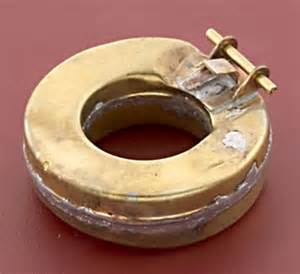Next week at this time I will have completed my Oral and Practical exams for my Powerplant license. As you might imagine, much of time is currently devoted to studying. I am feeling pretty confident about the oral portion of the exam, except for the parts about fuel metering in carbureted engines.
About that – did you know that there’s a type of carburetor that operates on the same principle as your toilet tank? It’s called a float carburetor, and, much like your toilet tank has a float ball that’s linked to a valve that will shut off the flow of water to your toilet bowl when the float reaches a certain level, the carb has vaguely kidney-shaped (or, for some motorcycles and the like, toilet-seat-shaped – hahahaha!) floats that are linked to a valve that will restrict or shut off flow of fuel to the engine when the floats reach a certain level. Who knew that aviation borrowed technology from plumbing?
Carburetors aside, the part of the exam I’m most concerned about is the Practical portion. This is where I demonstrate that I actually learned how to work on airplanes during the last 20 months. It’s up to the examiner to decide exactly what I’ll be doing, so I don’t know exactly what the exam will entail, but, from the prep guide, here’s a sampling:
- Time a magneto to a reciprocating engine
- Using a wiring diagram and a multi-meter, troubleshoot an electrical fault on an airplane
- Safety wire fasteners in a series so that the wire keeps them from unscrewing
- Starting with plain tubing and various fittings, fabricate the tubing and fasteners together to be able to withstand thousands of foot-pounds of hydraulic pressure (the pictures are from my practice sessions a couple of weeks ago)
- Use some fancy measuring tools to figure out if a crankshaft is bent, and if so, how much
- Use a multi-meter to measure the resistance, current and voltage drop and check the continuity of various circuits
- Run up an engine and check for proper idling and magneto switch operation
- Grind valves to the proper measurements
- And, many more!
I’m a little terrified about the practical aspect of of the exam. Since I don’t have an airplane at my house, I have to rely on book knowledge for preparation. Well, that and 20 months of training. We have done all the above activities in class, so studying is mostly a matter of reviewing the techniques and making sure I remember all the steps and potential gotchas.
It’s hard to believe how much has happened since that fateful day when I decided to leave Microsoft. Now the rubber hits the road (or the tarmac, if you will). I’m not just an aviation dilettante any more – I’m about to be an actual mechanic! Whoo hoo! But, also, EEEEEKKKK!





You go girl! You’ll do great! We are so so happy for you and your success!!!!!
LikeLike
Thank you! Still nervous, but the preparation is coming along nicely.
LikeLike
So exciting! Thinking “clear thinking & resourceful” thoughts for you!!!! 🙂
LikeLike
Thanks!
LikeLike
GOOD LUCK!!!! You’re do GREAT!
LikeLike
Thank you!
LikeLike
You’ll do fine, Jenn. it’s the anticipation and worry that’ll kill you, deep breath….deeeeeeeppppp breath. :o)
LikeLike
Thanks! I’ll know soon – heading to bed – need to be up bright and early for the test.
LikeLike